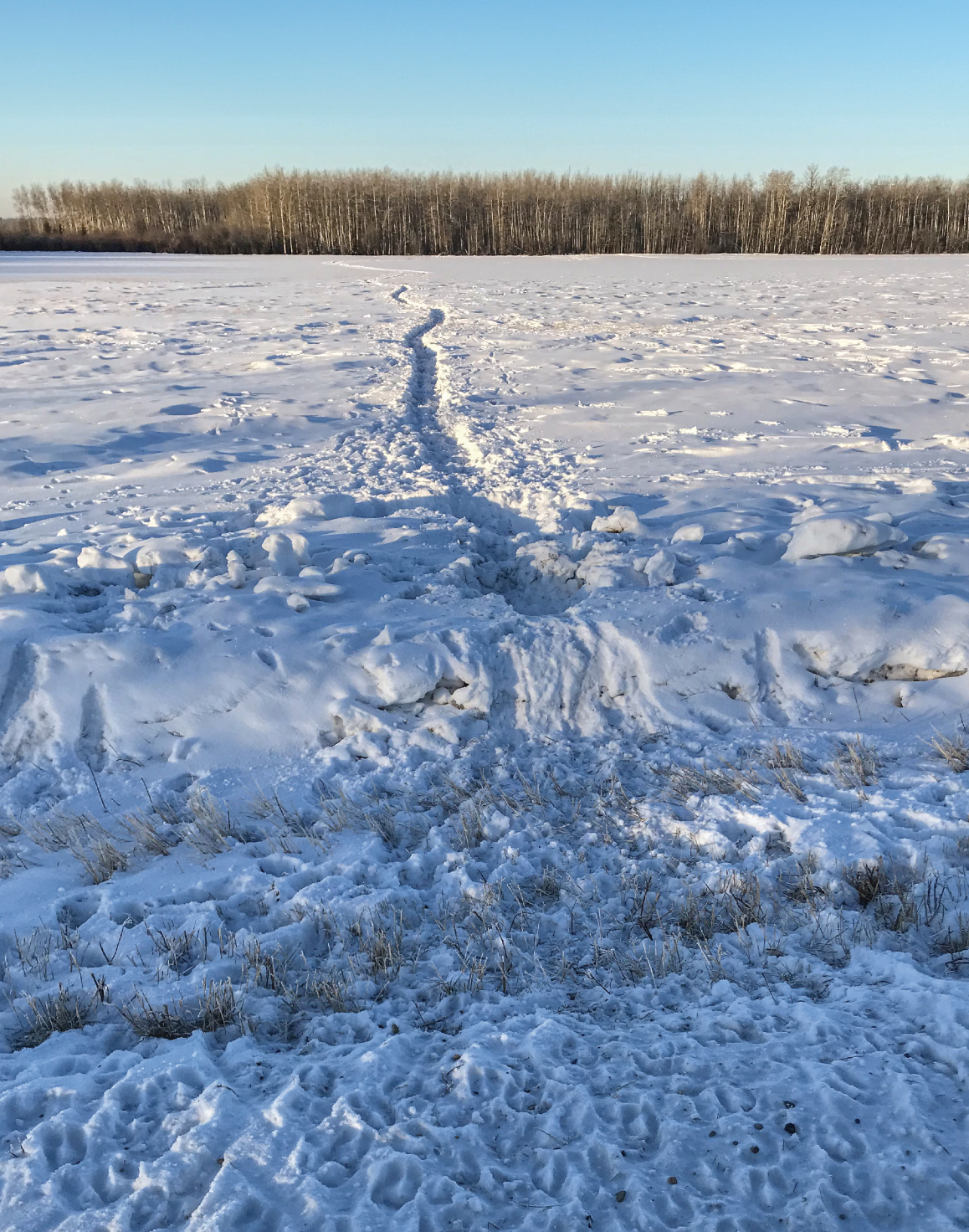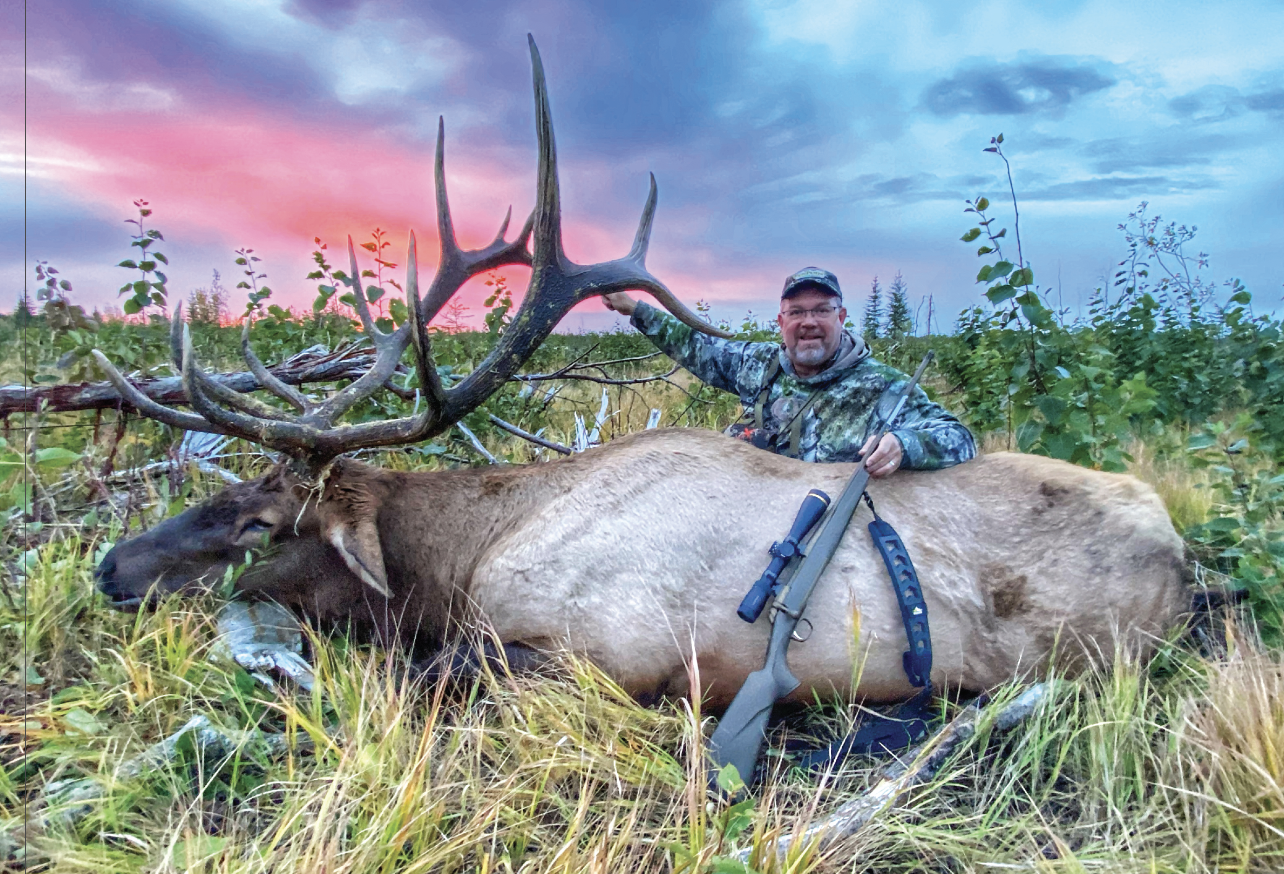
6 minute read
MISSION: IMPOSSIBLE ELK HUNTING
► article and photos by Brad Fenson
After years of hunting, I finally located a herd of elk. It was early October, and a rutting bull tipped me off with a loud bugle as to where the elk were hiding. Even with this knowledge, I was unable to position myself to get a shot. However, early the next day, I hid in the forest where I expected the elk to travel. Three hours later, the first cows and calves crossed the cutline. Trailing the herd was a nice bull, sporting five points on each antler, striking a regal pose. A single, well-placed bullet ended my quest for an elusive elk.

Increased challenge
Many successful deer and moose hunters find elk challenging. Elk are herd animals and a collection of dozens of eyes and ears make them difficult to pursue. They are shy, cunning, evasive, and wary—living off the beaten path. Practising dense forest navigational skills is key to being a successful elk hunter. Running game trails and determining travel routes between bedding and feeding areas is like putting together pieces of a giant jigsaw puzzle that gets you close enough to elk without spooking them.
More than cunning
Hunters that rise to the challenge will find elk. Getting off the beaten path and onto active game trails is an education in the daily movements of these aristocrats of the deer family. However, there’s a price that all hunters pay: your success makes that herd harder to hunt in the future.
Elk are highly mobile and seem to have a sixth sense for discovering—and remembering—properties posted as “No Hunting.” The animals will even move from one Wildlife Management Unit (WMU) to another to avoid pressure. Prairie elk in southern Alberta will travel into Montana to avoid hunters and return when that state opens to hunting. How can a large ungulate know how to avoid hunting pressure?

Scientifically proven
Are some elk unhuntable? Every human encounter an elk has is a learning opportunity. The older an elk gets, the wiser it is and more difficult they can be to find. Dr. Mark Boyce, a professor of Ecology at the University of Alberta, used science to show that elk learn to avoid hunters. Boyce and his colleagues published a paper titled Learning from the mistakes of others: How female elk (Cervus elaphus) adjust behaviour with age to avoid hunters.
The scientific team caught and fitted 180 elk with radio collars and tracked them for several years, collecting data on their movement. The information showed that as they age, elk limited their time in terrain where they might be vulnerable, making themselves less visible to hunters. The wise old elk also learned to move to more challenging terrain and heavier forests once hunters showed up during the hunting season. The ability of elk to learn and take action became apparent when data showed that old cows were even smart enough to know how to avoid hunters, depending on whether the hunters were using bows or guns.
Population dynamics
There are always younger animals in any elk population that have not yet learned to avoid all hunters. Young bulls and cows are more susceptible to harvest, which is why there are antler restrictions in some WMUs. A minimum three-point antler restriction allows the spikers and young bulls to survive to become breeder bulls.
Mission: Possible
Is hunting elk an impossible mission? No. The Alberta estimated elk harvest in 2023 was 10,119 animals, of which 4,486 were bulls, 4,975 were adult females, and 658 were young or calves. Depending on the WMU, hunter success rates ran from 0 to 78 percent. The prairie zones, without dense tree cover, produce the highest results, and a limited entry draw is required to hunt the WMUs with these high harvest rates.
It is important to note that hunters can also learn more about elk on every excursion, and put that knowledge to work to find even the educated old elk.
Elkology
Knowing the critter you're pursuing is critical to success. Learning the herd or individual patterns of the elk you’re hunting lets you understand how they are avoiding people. It might mean packing an elk out of the deep recesses of a steep river valley, but where there is a will, there’s a way.
Are cows and bulls hard to find? The short answer is yes. However, understanding seasonal changes and movement provides the best opportunity to be in the field. The rut makes elk vulnerable as vocalizing causes them to give up their location. Facing the challenges of cold temperatures and deep snow, elk are forced into the open to feed and once again lose the upperhand. One of the biggest overlooked factors is the sign a large herd leaves behind. If 100 elk travel through the forest, across roads or cutlines and into agricultural fields, they leave a map of where they live, bed, travel, feed, and escape. A hunter, wanting to learn more about elk, must follow the tracks.
Rise to the challenge. Sharpen your navigational skills, stay physically fit to cover the ground, do the legwork required to find elk, and enjoy the bounty of elk meat.

How does it relate to conservation?
Elk have an interesting conservation story in Alberta. In the mid-1700s, Anthony Henday wrote about numerous elk or waskesew (wapiti) sightings and harvests while exploring the parkland of Alberta. Alexander Mackenzie found abundant elk in the Peace River area in 1793. Settlers, the North-West Mounted Police, and the establishment of forts in the late 1800s increased elk harvests. By the early 1900s, only around 400 animals remained in the province.
John Gunson tells the Alberta elk story in his book, From Canoe to Computer, a memoir of his work as a biologist in Alberta and the first studies completed on many species, including elk. Populations changed with protection and regulations. By the early 1970s hunters were starting to harvest elk, leading to new restrictions. For decades, successful hunters were required to register any elk harvested. By the 1990s, elk returned to much of their historical range.
Elk herds are flourishing today, much to the dismay of many landowners with hay or cropland. Hunters can obtain general season tags and possess extra antlerless opportunities. The Government of Alberta has initiated a new Wildlife Management Responder program to reduce and resolve elk conflicts with agricultural producers through harvesting problem elk at the source.
There has never been a better time to be an elk hunter in Alberta. Healthy populations, sound management programs, and liberal seasons increase your odds of success. The best part of any elk hunt is the abundance of flavourful and tasty proteins that can be used to feed a family for a year.
Elk have proven they can become students of the hunter. Can hunters become students of elk?











